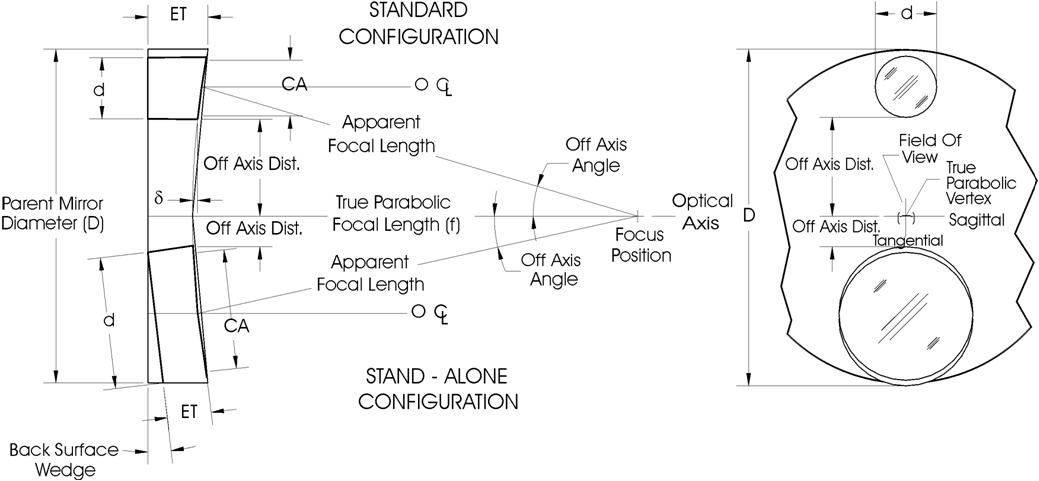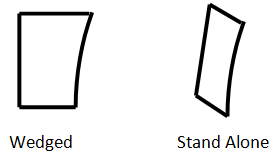OAP Mirrors
When specifying an OAP, consider the following items: 1. Substrate Material: Zero thermal-expansion ceramic (Zerodur or its equivalent) is the most stable and is our standard. Alternatives include Fused Silica, ULE glasses, conventional metals, and light weighted substrates. 2. Focal Length (FL): True Parabolic or Vertex Focal Length, and off-axis Apparent Focal Length (AFL), should be considered. Only the focal length, measured along optical axis from vertex to focus position, need be specified. 3. Off-Axis Distance (OAD): Specified along a perpendicular from optical axis to inner edge of mirror. 4. Outer Diameter (OD): Outer mirror diameter measurement compatible with physical requirements. 5. Clear Aperture (CA): The optically qualified region of the mirror surface. 6. Edge Thickness (ET): To insure structural stability, a mirror will typically be made from a blank having a 6:1 diameter-to-thickness ratio. For stand-alone mirrors, this is approximately correct. Standard OAPs sectioned from a larger diameter parent will be thicker. 7. Surface Accuracy- Deviation from perfect paraboloidal shape, specified as "peak-to-peak" (peak-to-valley) value in fractions of the interferometric test wavelength 0.6328 microns. Due to reflection at the surface, the wavefront error is twice the surface error. 8. Surface Quality or Finish: A measure of the optical polish, specified by "scratch/dig" values denoting surface imperfections, as defined by Military Specifications, MIL-0-1383. Typical Scratch/Dig specifications: 80/50 Standard IR quality AlSiO, our standard, is the most durable coating and has high reflectivity from Visible through the IR. SORL Mounts identify the clocking orientation of your OAP, which specifies the OAP focus position and dictates location of the Reference Flat. Using the mirror at this correct rotational position will assure optimum wavefront performance. This is the position at which the mirror was fabricated and tested. (See Mirror/Mount Assembly) NOTE: Please include the clocking orientation on your order. Other orientations are possible, but may impact your final cost. Your SORL representative is always available to assist you with any clocking orientation questions you may have.
Ordering Information Example: Order Number: OAP40-015-08 40 = 40 inch parabolic or vertex focal length Focal length: +/- 0.5% 1. Standard Coating: AlSiO. |
||||||||||||||||||||||||||||||||||||||||||||||||||||||||||||||||||||||||||||||||||||||||||||||||||||||||||||||||||||||||||||||||||||||||||||||||||||||||||||||||||||||||||||||||||||||||||||||||||||||||||||||||||||||||||||||||||||||||||||||||||||||||||||||||||||||||||||||||||||||||||||||||||||||||||||||||||||||||||||||||||||||||||||||||||||||||||||||||||||||||||||||||


